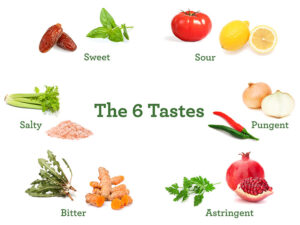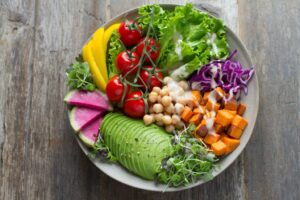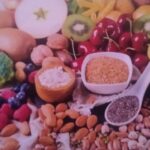Shadrasas or the Six tastes food are attributed with special qualities. The food we eat influences every amsha(cell) of our body. A meal which is inclusive of the six tastes is wholesome to the body says Acharya Charaka.


It also believes that certain foods build the mind and help the mental faculties function better while some can agitate it making the individual disruptive. It goes on to explain why certain diets are explained in certain seasons and festivals and the importance of fasting during certain days. One of the interesting topics in this section is the importance of the tastes we relish when having food and its role in the body. Ayurveda quotes that the diet we consume comes mainly in six forms:
1. Choshya (food that has to be sucked) Ex: Sugarcane.
2. Peya (Drinkable Liquid food) Ex: Juices, Soups etc.
3. Lehya (That which has to be licked) Ex: Sambar, Rasam etc
4. Bhogya (Foods that can be swallowed)Ex: Halwa etc.
5. Bhakshya(Food that use the teeth to tear) Ex: Meat etc
6.Chavya (Foods that have to be chewed).
These items are heavy is the ascending order. These are the types of food we consume. There are six tastes we relish while having such foods which are:
1. Madhura (Sweet) Ex: Milk
2. Amla (Sour) Ex: Lemon
3. Lavana(Salty) Ex: Rock Salt
4. Katu(Pungent)Ex: Pepper
5. Tikta(Bitter)Ex: Neem
6. Kashaya(Astringent)Ex:Legumes, Raw fruits and Vegetables.
Madhura rasa- The Sweetest of all:


Healthy skin, voice, hair and strength is got by sweet taste promoters. They are unctuous, cold and heavy, for example milk, ghee etc., they bring about stability and heal up emaciation. They are soothing to the nose, mouth, throat, lips and tongue. They are much liked by bees and ants i.e., they attract them faster compared to other tastes. When the consumption of the sweet tasting foods and diet are in excess it causes vitiation of the kapha dosha resulting in obesity, laziness, hypersomnia, heaviness, loss of appetite, loss of power of digestion, abnormal muscular growths , dysuria, cough, coryza, nausea, voice changes, eye diseases, lymphadenitis etc.
Amla Rasa- The Tangy Sour Taste:
The tangy sour taste is something everybody relishes from small children to pregnant women. Even elders at time like to slurp on sour raw mango rasams. Ayurveda explains that the sour taste has the predominance of Pruthvi and Agni Mahabhuta. It brings deliciousness in the food plated. It increases the metabolic fire, energises the body and mind, strengthens the sense organs, promotes strength, alleviates vata dosha, nourishes the heart , helps in moistening, swallowing and digesting the food taken. They are refreshing, light, hot and unctuous. Lemon juice and tamarind panakas are relished more during summer as they moisten, hydrate and yet clear up the system.
The sour taste is often linked with Vitamin C, surprisingly the qualities mentioned in right amount, and excess are similar as mentioned in Ayurveda. Amla (gooseberry) is said to have maximum amount of Vitamin C and the Sanskrit name of Gooseberry-Amla, says its importance. Inspite of these good qualities when it is taken in excess they cause dehydration, morbid sensitiveness of the teeth, eye problems, horripilations, liquification of kapha, aggravation of pitta, vitiate the blood, muscle wasting, emaciation and weakness of the body.
Lavana Rasa- The Powerful Salt Taste:
Salt is what makes things taste bad when it isn’t in them. That’s the power of the silent salt. The right quantity triggers the taste buds and brings a smile across the face and the lack or excess of it makes one frown. According to Ayurveda, it has a combination of Agni and Jala Mahabhuta in them. The Saline taste helps in carmination, lubrication and digestion. They are sharp and quick in action, slightly laxative, antispasmodics by nature, they alleviate the Vata bio-energy, cure stiffness, obstruction and accumulation, they nullify the effect of all other tastes, cause salivation, liquefy kapha bio-energy and clarify the channels of circulation.
When used in excess, they cause vitiation of Pitta bio-energy, aggravate the blood tissue. Individuals who normally relish excess of salt in diet can easily be effected ageing related problems and can acquire them faster than others. It could be early graying and wrinkling of the skin, hypertension, inflammatory changes in the body or even fertility problems. It can cause thirst, exhaustion, fatigue, erosion, depletion of muscle tissue and obstruction in function of the senses.
Katu Rasa- The Panting Pungent Taste:
There are many who love the pungent taste of the pepper corns and chilly flakes. They relish the panting, eye watering, dynamic blow it gives to the whole body. Ayurveda explains that the drugs and diet having pungent taste keep the mouth clean, promote digestion, help in the absorption of food, cause secretions through the nose and eyes, help in improving the functions of the sense organs, help in the elimination of toxins which are sticky in nature, cures itching, kills germs, corrodes the muscle tissue, breaks down blood clots, clarifies passages and alleviates Kapha.
They are light, hot and unctuous. They do these activities because of their basic nature which influences the Pitta bio-energy and excites it. When used in excess in isolation, they harm the fertility by virtue of their post digestive action. They also cause panting, sweating, loss of breath, delirium, unconsciousness, asthma, emaciation, choking, burning sensation of the throat, eyes and nose, making one extremely thirsty and diminishes strength. The dominance of the Vayu and Agni mahabhuta cause giddiness, burning sensation, tremors, piercing and stabbing pain in the legs, hands, back etc.
Tikta Rasa- The Healer Bitter taste:
The first thought that crosses my mind when I think of the taste, Bitter, are the powerful healing herbs- Neem (Azadaricta Indica) and Amrutha (Tinospora Cordifolia). My young patients often deny on taking them when they have allergy, fever or cold. Why, even some elders don’t relish it much. But there are some who also tell me that, medicines taste better when they are bitter than sweet. Such beneficial are the qualities of this unique not-much-a-relishing taste- Bitter. Drugs and diets having bitter taste are themselves not delicious but when added with other ingredients they promote deliciousness. They are antitoxic and germicidal. They cure burning sensation, itching, dizziness, obstinate skin diseases including leprosy, thirst and fever.
They promote firmness of the skin and muscles. They promote carmination and digestion, purify the lactating glands in pregnant women and therefore purify breast milk. They remove water retention in the body. They also help in depletion of fat, muscular tissue, bone marrow, lymph, pus, sweat, urine and stool. They are unctuous, cold and light. They are pitta and kapha reducers. When used in excess or isolation, by virtue of their unctuousness, roughness, and non-sliminess they deplete the moisture content, blood, muscle, fat, bone-marrow and semen. They produce roughness in the circulatory channels, reduce strength, cause emaciation, weariness, unconsciousness, giddiness, dryness of mouth and produce other diseases due to the vitiation of vata.
Kashaya rasa- The Bland Astringent Taste:
The drugs and diet having kashaya rasa or astringent taste are constipative and sedative in nature. In terms of qualities or gunas, astringent is drying, cooling, light, clear, firming and contracting. It makes the mouth pucker and feel dry. They are very good absorbents, cause granulation and stiffness. They increase the sensitivity of the area. They alleviate kapha bio-energy. They absorb the body fluids, are dry, cold and heavy, and therefore are excellent healers in cases on diarrhea and vomiting. Intake of astringent diets can cause weight loss, reduce water retention in the body, lower the sugar levels slightly, can dry up purulent discharges on the skin or mucous areas. Some examples of astringent foods are pomegranates, green beans, okra, alpha alpha sprouts, turmeric, tea and legumes.
When used in excess, they cause dehydration, affliction of the heart, abdominal distension, obstruction of speech, constricts the channels in the body and destruction of man-hood. They are slightly hard to digest and because of this they lower the metabolism. This is also the reason they are contra-indicated when one is suffering from fever. Too much intake of the astringent foods can cause retention of urine, flatus or feces. It can lead to muscle spasms and osteoporosis. It can also cause severe emaciation, weariness, thirst and stiffness.
Food for the body, mind and soul:


The amla rasa or sour taste increases the intellectual activities. But too much of it gives rise to jealousy, anger, impatience and hot temper. The pungent taste makes the mind irritable, angry and impatient. The bitter taste stands with morality of clearing the mind and senses during distress. That’s the reason bitter taste helps you to get better during illness. It manages food cravings. The bland astringent taste helps to recover the fiery mind, clears senses and emotions and removes lethargy. The food we eat influences every amsha(cell) of our body. It triggers every action and every decision. A meal which is inclusive of the six tastes is wholesome to the body says Acharya Charaka.


Dr. Sanmathi Puneeth
Shubha Ayurvedic Centre & Sriranga Ayurveda
Basavanagudi, Bangalore-560004.
Ph:. 7829488352, 080-26627717











